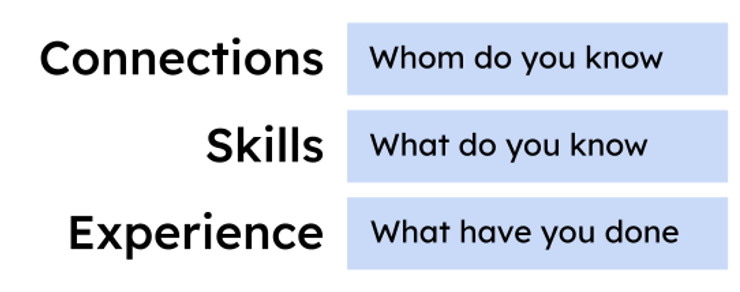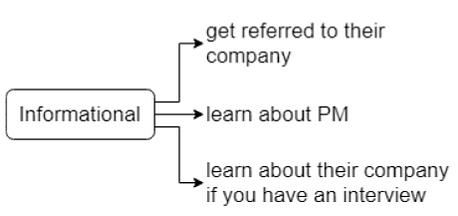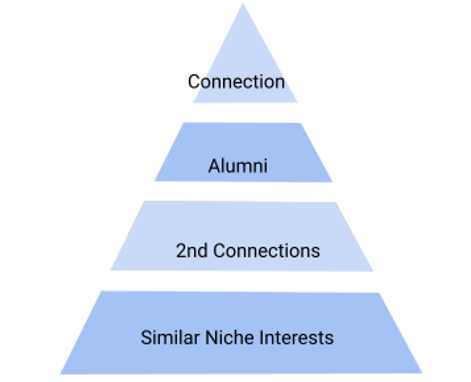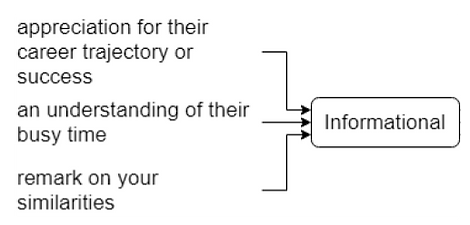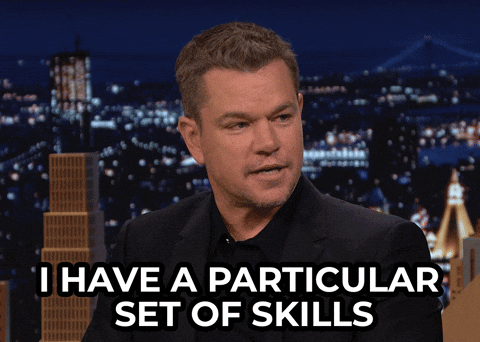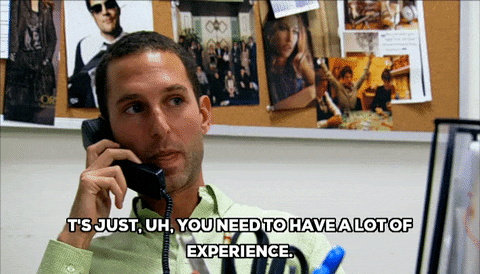

Discover more from Harmony
A 3-Step Guide To Navigate A Tough Job Market
Who You Know, What You Know, And What You've Done
I hear a common challenge from many job seekers: How to showcase their skills to stand out in job applications and interviews?
2 frequently asked questions are:
How do I pivot my career to a different role or industry?
How do I get my first Product Manager (PM) job in a challenging macroeconomic environment?
In this article, I'll share a 3-step approach:
Connections: Whom do you know?
Skills: What do you know?
Experience: What have you done?
You can apply these steps to:
Transition to a new function within the same industry
Enter a new industry while staying in the same function
Move to a new company within the same industry and function
I spent 1 hour writing this blog. You need 4 minutes to read this.
I first published this on www.sparkcreativetechnologies.com on Nov 13, 2024.
Related:
Using Stanford’s Design-Thinking Approach To Design Your Life
Personalized note examples in Reconnecting With Connections and Thank You Notes
Challenges With Online Job Hunt
In today’s tough economic climate, landing interviews—and converting them into job offers—is challenging. Even skilled professionals struggle due to intense competition.
The main issue with online job applications is the sheer volume of applicants. With so many submissions, recruiters can’t review each resume manually. To improve your chances, focus on strategies to stand out.
Don’t: Apply To Jobs Online
I hear:
“I have applied to 100s of jobs, but I’m getting some rejections and no interviews. I need interviews! How do I get more interviews?”
The biggest shift I suggest is to stop relying solely on online applications. Instead, focus on building connections and showcasing your expertise. Career coach Austin Belcak also agrees with this approach. This article focuses on “what to do” actionable steps, instead of “what not to do and why”.
Do: 3-Step Guide With Examples
Below, I outline 3 steps with examples and links to additional resources.
Step 1 - Connections: Whom do you know
Why?
Learn about your desired function, industry, or company
Talk to professionals who have “been there, done that” to follow their insights
Referrals to hiring managers
Building connections is essential for landing your first Product Manager (PM) role. Start by tapping into your current network.
Reach out to friends, family, former colleagues, and acquaintances. These first-degree connections can offer valuable insights or even connect you to unexpected opportunities.
Next, tap into your alumni network. Platforms like LinkedIn make it easy to find alumni working in product management (target function). Alumni often welcome outreach from fellow graduates, making this a powerful way to connect.
Example LinkedIn search:
LinkedIn Search for BITS Pilani alumni who work as PMs soon after undergrad. Start from this then go through profiles one by one.
Reach out to second-degree connections through a "warm introduction". Look for individuals with similar interests or hobbies which improves your chances of a positive reply.
When reaching out, personalize your messages to make a strong impression. Mention shared backgrounds or interests to establish a connection.
Example of a personalized note:
"Hi [Name], I noticed that we're both [University] alumni with a keen interest in product management. Your journey to [Y function, company, industry] is inspiring as I want to follow the same path. Would you be open to a brief chat sometime next week?"
For more detailed strategies on effective networking—including finding contact information, crafting outreach messages, and knowing when to follow up—check out How to Cold Outreach and Network to Get Your Dream Job.
Step 2 - Skills: What do you know
Why?
Learn jargon
Demonstrate interest in the function or industry
Learn best practices then apply them now
Build your skill set by immersing yourself in product management fundamentals. If you prefer books or audiobooks, start there. Alternatively, watch YouTube videos by popular PM authors to understand industry concepts, terminology, and essential skills.
Use the curated guide Books and Resources for New and Aspiring Product Managers to create a strong knowledge base. Familiarity with these concepts will boost your confidence and readiness for interviews. You learn the right jargon.
Applying principles from expert sources enables you to practice real skills in projects. Mentioning these books or courses to potential employers shows a proactive approach they highly value.
Step 3 - Experience: What Have You Done
Employers want to see how you've solved real-world problems. Crafting a case study is a powerful way to showcase your skills and problem-solving abilities.
Why?
Build projects relevant to your target role, even before securing it.
Demonstrate practical application of your knowledge.
Differentiate yourself by showcasing real-world examples in a portfolio.
Choose a project that excites you. Here are some ideas:
Analyze a past internship project from a new perspective
Propose a strategy to improve a critical metric for your favorite app
Suggest go-to-market (GTM) strategies or product improvements for a target company
Starting from scratch can be challenging. Use this framework as a guide: Why Case Studies Are Key To Landing A PM Role And A 9-Step Framework To Ace Them.
Present your case study in 2 ways:
Publish it on LinkedIn, Substack, or Medium. Use free platforms for easy access.
Mention it in interviews or networking events.
In your write-up, emphasize your analytical approach, decision-making, and the value your solutions offer.
Examples:
Analysis of a company in the target industry: Who is as seamless as Uber in Irish real estate?
3+ case study examples: Why Case Studies Are Key To Landing A PM Role And A 9-Step Framework To Ace Them
Revisit an internship: Revisiting a 2D Simplification of B2C Acquisition Channels
Multiple project examples: 30+ ChatGPT (GPT-4o) Use Cases As Your Virtual Co-Founder and Product Assistant
Meta-analysis of an event: Analyzing Meetup Signups And Conducting An Event Retrospective
Show user acquisition analysis: I Almost Stopped Using Twitter And Slack. What Made Me Give In? Why Almost?
A 30-hour project: AI Plus Paper: Wins and Challenges for an Illustrated Book
Using The 3-Steps In Your Job Search
Ready to stand out in your next job application?
Now that you know these three steps, you can apply them to your job search. Building connections, honing your skills, and showcasing your experience will enhance your chances of landing your desired role.
If you'd like more personalized guidance or have specific questions, don't hesitate to contact me directly at sparkcreativetechnologies.com.
Related:
Using Stanford’s Design-Thinking Approach To Design Your Life
Personalized note examples in Reconnecting With Connections and Thank You Notes
I first published this on www.sparkcreativetechnologies.com on Nov 13, 2024.






